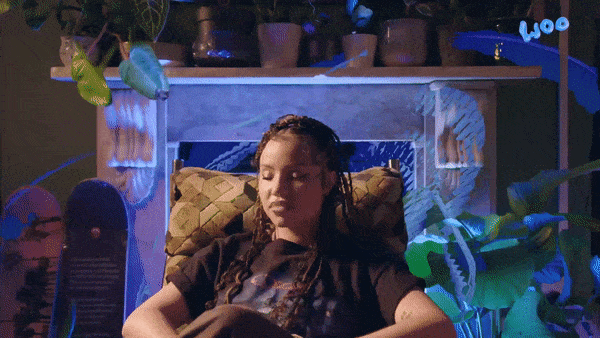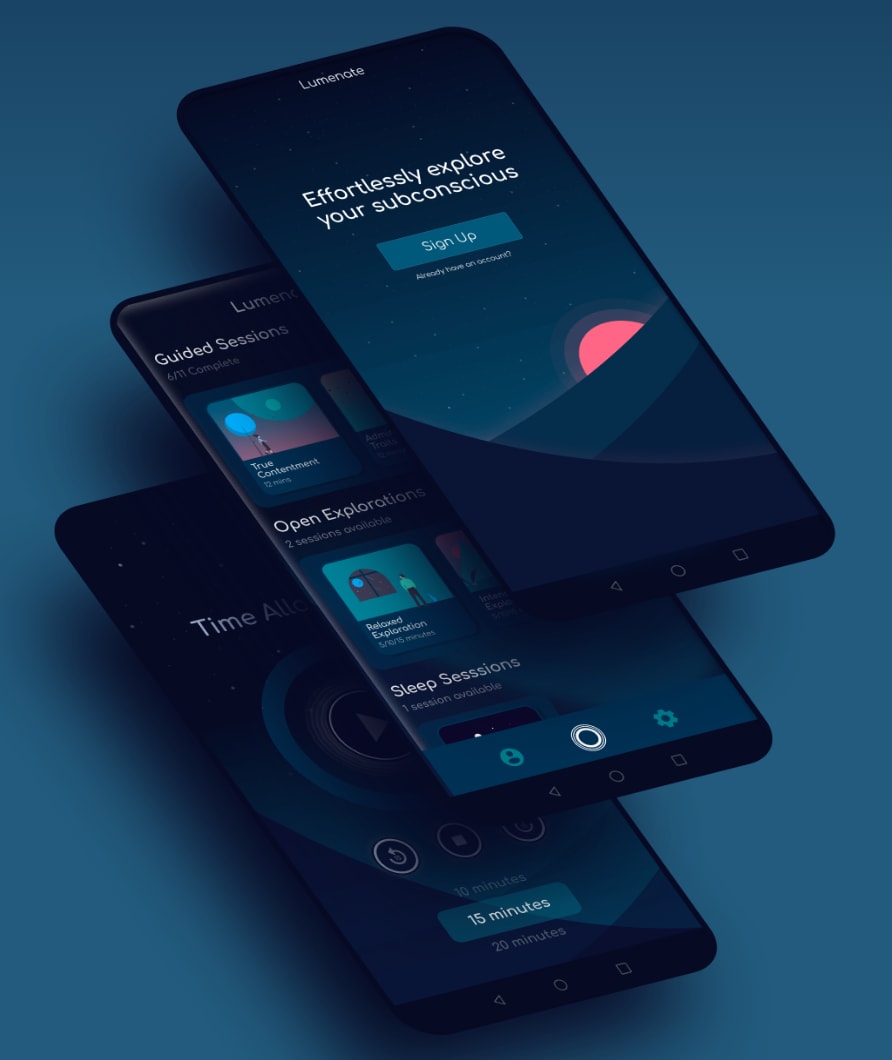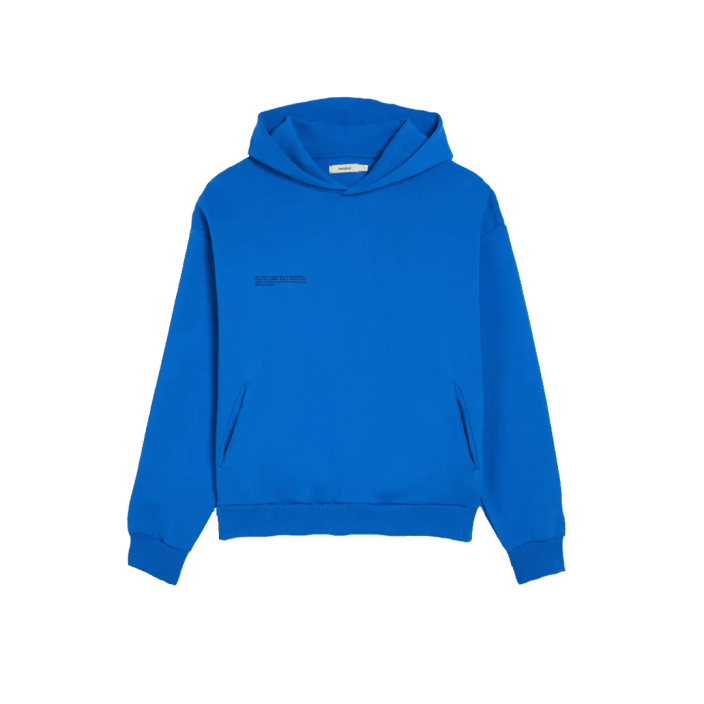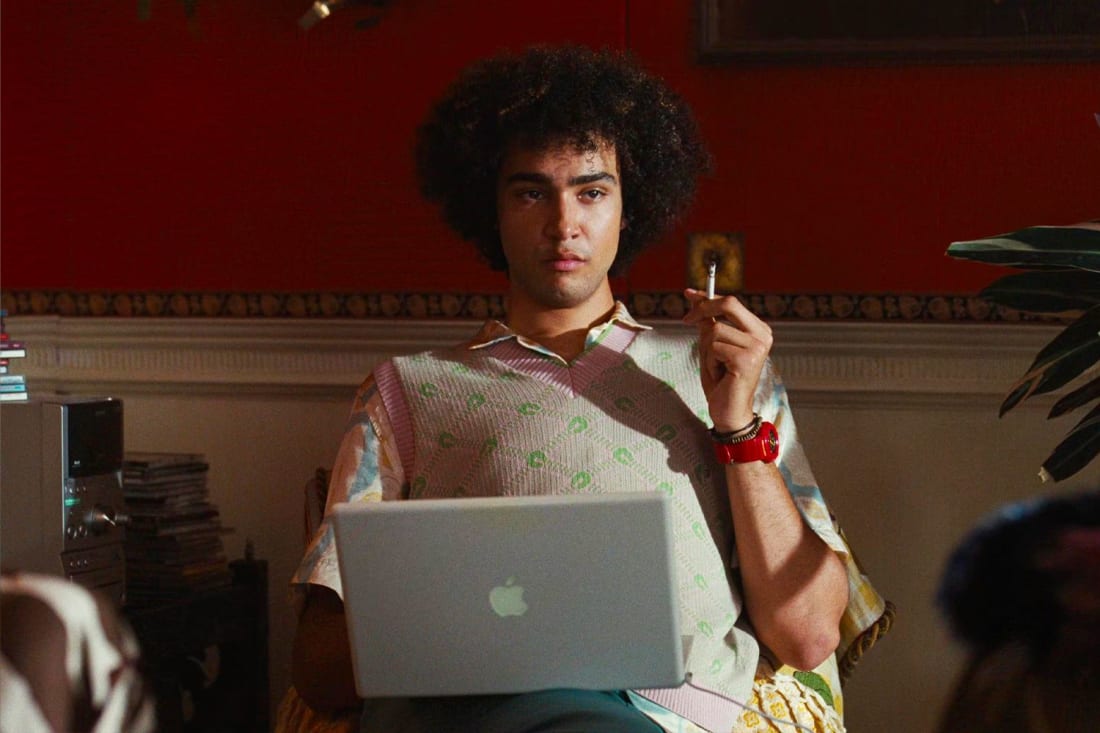How to have a drug-free trip
Sound, breath, and emerging tech can help us experience the benefits of tripping without breaking the law
Sound, breath, and emerging tech can help us experience the benefits of tripping without breaking the law
Given the hardships in the UK at the moment, it’s no wonder that there is an uptick in the interest in and use of psychedelics. With the cost of living crisis, which has seen the largest increase to household bills for a generation, coupled with inflation and stagnant wages, it shouldn’t come as a surprise that young people in particular are looking to take a trip to an alternate reality.
Yet, figures also seem to show that Gen Z are drinking less than previous generations, and, instead of searching for brief moments of drug-fuelled hedonism, many young people are after more conscious, sensory experiences. The good news is, this doesn’t mean saying farewell to psychedelic, out-of-this-world escapades.
Now, thanks to advances in technology, there’s no need to turn to the dark web for dodgy Class A substances if you’re looking to escape into another dimension. Here are a few ways to join the psychedelic boom, drug-free.
Holotropic breathwork
Holotropic breathwork is a respiratory practice first developed by psychiatrists Stanislav and Christina Grof in the 1970s, to help people reach an altered state of consciousness without the use of drugs. It was originally employed as a therapeutic tool to guide patients to a state of wholeness.
The technique itself combines accelerated breathing and evocative music to influence the mental, emotional, and physical states in the body. Typically, each “tripper” lies back on a mat with their eyes closed and aligns their breathing with the music, while each “sitter” - who is tasked with looking after one of the “trippers” – guides them through the process and makes sure nothing goes awry.
The description on the official holotropic.com website on how exactly to reach an altered state of consciousness is decidedly vague, however, perhaps because Holotropic Breathwork® is a trademarked technique, and only certified practitioners are allowed to practise it.
According to holotropic.com, one of the most unique and powerful dimensions of HB “is its revolutionary expanded cartography of the human psyche”. Rather than a hallucinogenic, out-of-body experience, HB is more introspective, reflective, and cleansing, more self-healing than escaping reality.
If this sounds like your bag, you can read more about it here

Sensiks
This is an altogether different approach to ‘drug-free tripping’. Sensiks offers fully-immersive “sensory reality” experiences with the use of VR headsets and other “multi-sensory” hardware. Sensiks’ flagship product is its Sensory Reality Pods, which recreate the sights, sounds, smells and sensations of different environments.
These pods allow users to “embark on a sensory journey that can span countries, oceans, and galaxies without physical boundaries of time and space”, as they have all five of their senses stimulated simultaneously. A variety of multi-sensory experiences is offered ranging from soothing natural trips to beaches or forests, biometric breathing exercises to full interactive VR gaming applications.
Sensiks claims that the pods can be used to offer stress-reducing events, conjure “out of body experiences that induce euphoria, relive and process memories from the past”, and improve quality of life by offering “therapeutic solutions, joy, connection, happiness, and play.”
An unattributed quotation on their website – presumably from one of the founders – says: “what computer programming did for the digitisation of society and economy in the last two decades is what sensory reality will do for understanding and optimising the mental state of human beings”. These are lofty claims for what is essentially smell-o-vision, but it does sound like a lot of fun!

Dream machine
In 1959 artist Brion Gysin invented a drug-free route to psychedelic euphoria – his dream machine, “a spinning cylinder that shines flashing lights onto a viewer’s closed eyes”, was made as a shortcut to spiritual enlightenment for the masses. Designed to be the “first artwork to be experienced with your eyes closed”, Gysin had a pioneering vision for his invention to replace the television in every home in America.
As the story goes, Gysin was on a bus going down a straight, tree-lined road on a sunny day, and as he was falling asleep against the window, he described himself as entering a kind of transcendental state as the sunlight flashed between the trees onto his retinas. He saw extraordinary visuals, colours, patterns and kaleidoscopic shapes. When the trees passed, his visions stopped.
Now, as The New Scientist reports, producer Jennifer Crook has reinterpreted it as a multimedia art installation with the aim of creating “a communal head trip that will not only expand visitors’ experience, but also probe the depths of human consciousness.”
Crook said she got the idea from having a transcendent experience at a John Hopkins gig. She then enlisted the electronic artist to produce sound for her reimagined dreamachine, which will be touring the UK this year as part of Unboxed festival.
Hopkins is joined by Turner Prize-winning artists Assemble, and a team of leading technologists, scientists and philosophers who all worked together to bring Crook’s vision into (un)reality.
Find out more here.

Sound healing
When most people hear the term “sound healing” it likely conjures up images of gong baths or singing bowls, which can often turn people off the idea – it feels outdated and unrelatable. But there has been a surge in recent years of contemporary artists embracing the fundamentals of ancient sound healing practices, and repurposing them for modern music consumers.
Artists including John Legend, Eryka Badu, and St. Vincent have each recently created their own meditative pieces alongside mindfulness app Headspace, which aims to provide users with concentration-boosting music, short breathing exercises, and meditations “to help you find a less distracted, more productive headspace”. One of pop artist Grimes’ most-played tracks of 2020 was an AI lullaby she created with Endel, an app that provides personalised sound environments “aimed at improving user’s wellbeing”.
Embodied: Sound healing with Woo
Woo is launching its own sound healing audio-visual series, Higher Frequencies, for which sound artists have collaborated with animators from Kinda Studios to create meditative pieces. The first episode, Embodied, features music from electronic producer Vegyn which combines audio frequencies to create Binaural Beats – auditory illusions that occur when you hear different frequency sounds in each ear – and is accompanied by visuals of a glassy figure skating across a shimmering lake, which reverberates and pulsates in time to the track.
Landau explains the significance of this figure: “Because we’re witnessing the movements of a human form, we’re activating the mirror neurons, which means that even though we’re not actually moving, the mind responds as if the body is recreating those same moments.”
You can find Embodied here.
Lumenate

If the other methods sound like a bit too much work, then yes there is also a smartphone app to help you experience enlightenment: Lumenate is “on a mission to make impactful subconscious exploration more accessible than ever”.
The app uses stroboscopic light sequences from your phone’s torch to guide your brain to a unique and powerful altered state of consciousness “between that of deep meditation and classic psychedelics.”
Designed with guidance from world leading psychedelic researchers, the app combines “guided intention setting” and “experience integration exercises” to maximise the impact of each exploration.
The app does require paid subscription for the full experience, but the website says if you can’t afford to sign up you can email support@lumenategrowth.com and they can arrange a free account for you.
Find out more here.
Enjoyed this article? Delve into the ever-evolving world of psychedelics with our new original series, The Bigger Trip







